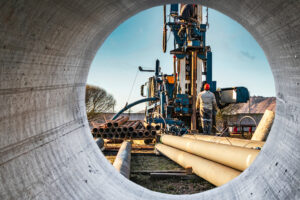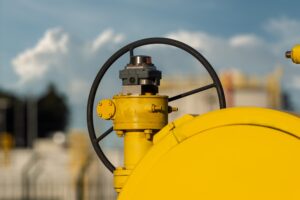As most Operations Managers know, protecting equipment means protecting the company as a whole. There’s a direct cost associated with the entire process of purchasing, transporting, and utilizing tubular goods. Consequently, companies quickly learn how costly this can be when they don’t take proper precautions and safeguard oilfield equipment.
The Challenge of Keeping Tubular Goods Stable
In particular, companies also understand that there are unique challenges that come with transporting pipe. Because of their variable sizes, lengths, and weights, OCTG must remain stable and in place during transportation and storage. Not only that, but companies don’t want their pipelines, end connectors, or threads to suffer damage or corrosion. However, operations are at risk when they don’t utilize protective products to stabilize and separate tubular goods. This risk also includes other vital types of oilfield equipment as well.
So, how can producing companies effectively overcome such challenges? They can look to two of the industry’s most efficient tools for pipe stabilization and separation. When you need to secure tubulars during transportation and storage, you should always consider applying bumper rings and pipe chocks.
Ergonomic Bumper Rings
Bumper rings are high-quality impact-resistant bands that encircle pipes during transport, storage, and processing. They’re made with impact-resistant compounds like EVA and polyethylene. These strong rings protect pipes from impact damage and help maintain space between pipes to avoid serious bumping and contact. In other words, this “bumper” of space prevents tubular goods from frictional damage and keeps them stable at all times.
Stabilizing Pipe Chocks
Pipe chocks keep piping stable in another unique way. During pipe transportation and storage, pipe chocks act as a stabilizing wedge that prevents tubular piping from rolling or shifting. Suppliers make high-quality pipe chocks from heavy-duty plastics like melded HPDE resin, or from steel for heavier pipe loads.
Though they can be small in size, they perform a big job in stabilizing tubular goods of various sizes. Chocks are adept at preventing pipes covered with residual oil or water from slipping. Overall, pipe chocks are extremely useful because they’re easy to apply, making for efficient stabilization without compromising load-safety.
Benefits of Pipe Chocks and Bumper Rings
While both methods of pipe protection have obvious safety and cost management benefits, each type also has unique perks. For example, both tools are made from recyclable materials, which deems them eco-friendly for the environment. In addition, when companies utilize pipe chocks and bumper rings in combination, they ultimately protect their investment and operations. Both stabilizing tools make operations effective and efficient. Ultimately, managers are better able to track stock and keep warehouses clutter-free.
Whether you’re transporting hundreds of tubular goods, or thousands, stabilization and separation tools can make the job much safer and easier. Bumper rings and pipe chocks are perfect for holding oilfield equipment in place and/or keeping them from colliding into each other.
Protect & Stabilize Your Investments the Right Way
Manufacturing companies like MSI Pipe Protection Technologies truly understand your pipe protection needs. Our goal is to always supply top-quality products to meet operational needs no matter how large or small. When companies are able to stabilize tubular goods during transport and storage, they’re assured that their pipes are damage-free and ready for use when they need them.
Learn more about our pipe protection products, and how we can help you deliver all day, every day. Connect with MSI today toll-free at 1-877-276-9208, or request a quote now.




